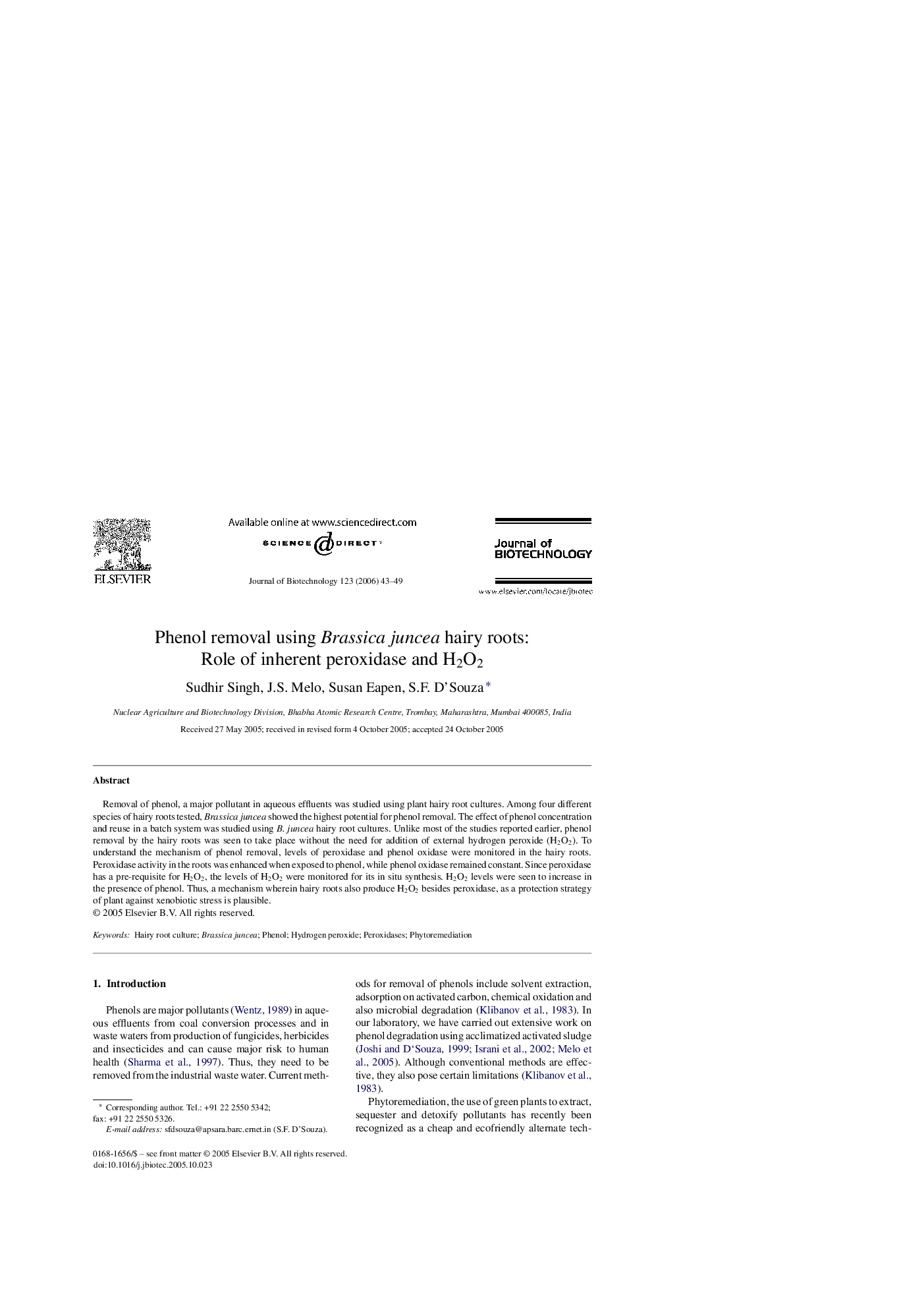| Article ID | Journal | Published Year | Pages | File Type |
|---|---|---|---|---|
| 25777 | Journal of Biotechnology | 2006 | 7 Pages |
Removal of phenol, a major pollutant in aqueous effluents was studied using plant hairy root cultures. Among four different species of hairy roots tested, Brassica juncea showed the highest potential for phenol removal. The effect of phenol concentration and reuse in a batch system was studied using B. juncea hairy root cultures. Unlike most of the studies reported earlier, phenol removal by the hairy roots was seen to take place without the need for addition of external hydrogen peroxide (H2O2). To understand the mechanism of phenol removal, levels of peroxidase and phenol oxidase were monitored in the hairy roots. Peroxidase activity in the roots was enhanced when exposed to phenol, while phenol oxidase remained constant. Since peroxidase has a pre-requisite for H2O2, the levels of H2O2 were monitored for its in situ synthesis. H2O2 levels were seen to increase in the presence of phenol. Thus, a mechanism wherein hairy roots also produce H2O2 besides peroxidase, as a protection strategy of plant against xenobiotic stress is plausible.
